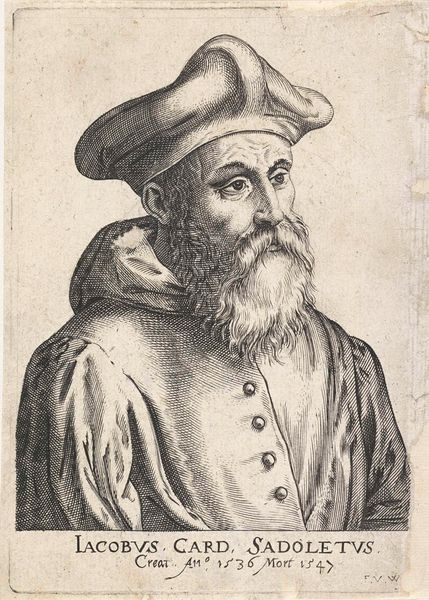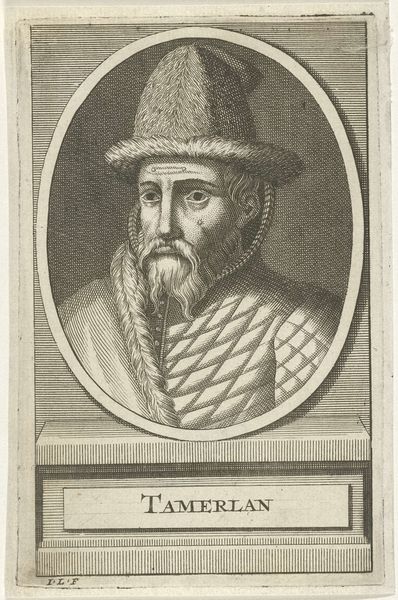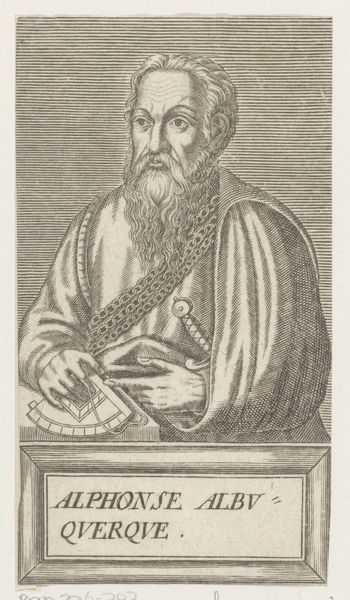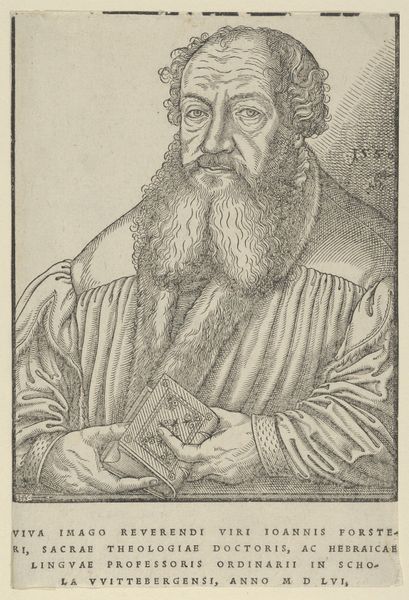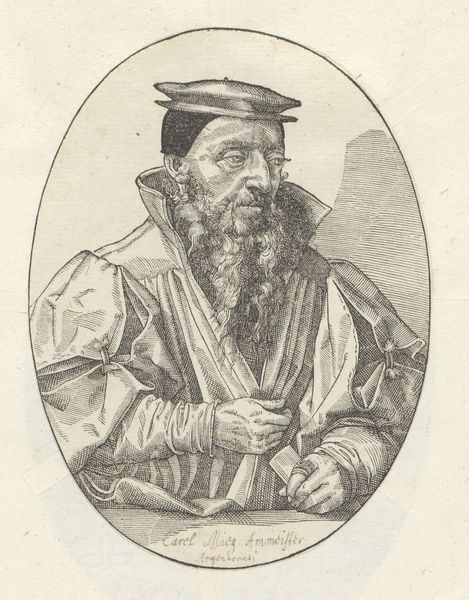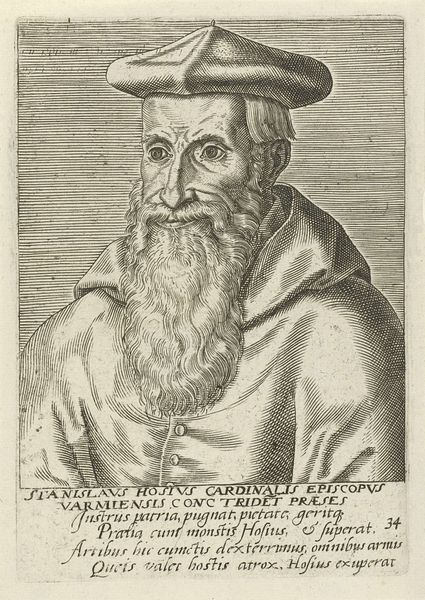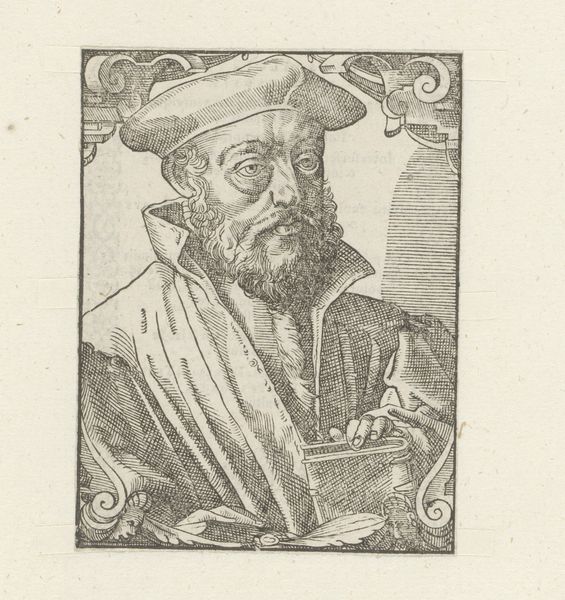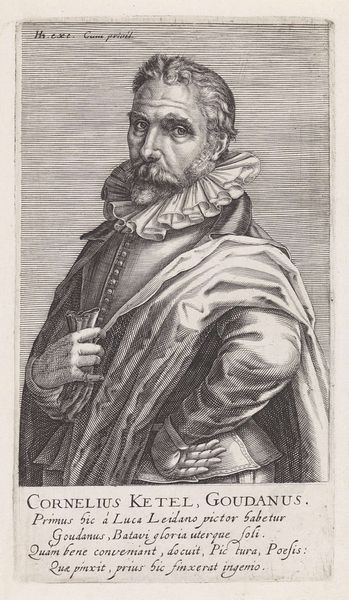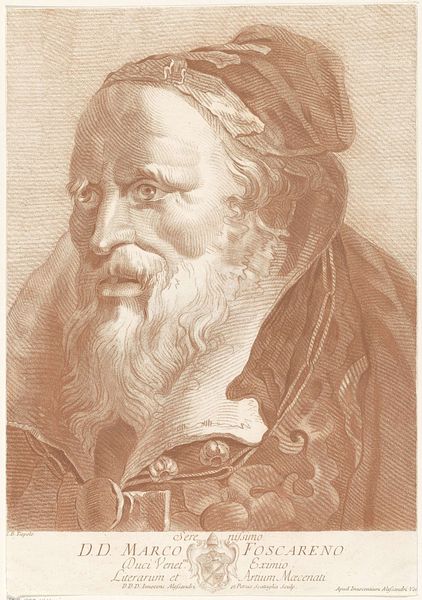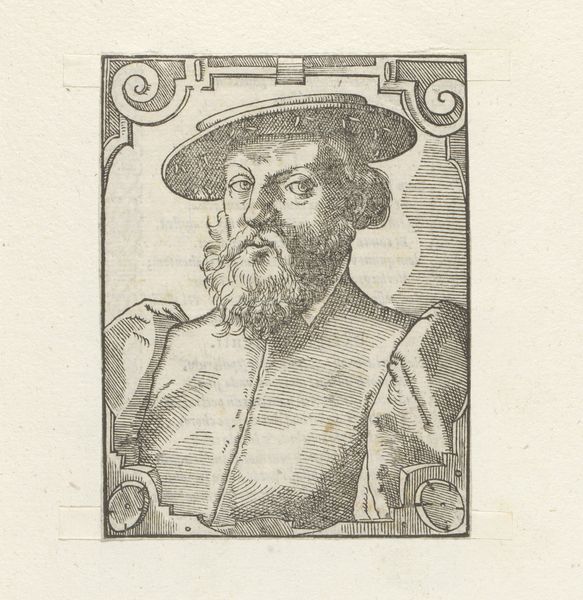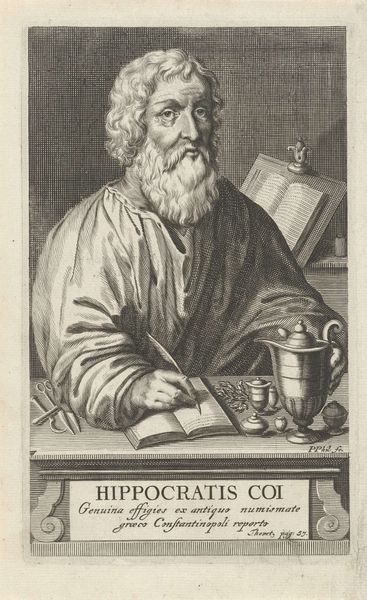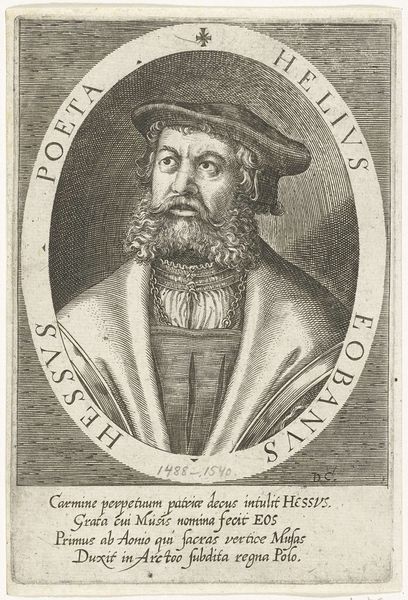
print, etching, engraving
#
portrait
#
baroque
# print
#
etching
#
history-painting
#
engraving
Dimensions: height 97 mm, width 68 mm
Copyright: Rijks Museum: Open Domain
Editor: This is a fascinating etching, "Portret van een man met baard en bonnet," from 1646 by Wenceslaus Hollar, found here at the Rijksmuseum. It’s incredible how much detail Hollar achieved with simple lines, and I find the sitter's gaze both penetrating and melancholic. What historical context illuminates this piece for you? Curator: It's tempting to see melancholic depth in a portrait like this. But, within its period, portraiture held a strong public role. Consider how prints like these circulated. Hollar was working in a time of great political upheaval in England and throughout Europe. Etchings became vital means of disseminating imagery and shaping public perceptions. Editor: So you're suggesting the artist isn't necessarily going for individual expression but more to spread a certain image? What would be the purpose? Curator: Exactly! Prints could act as political endorsements or subtle critiques. The man's 'common' dress— the bonnet, simple collar— juxtaposed with the detailed execution of the print itself, suggests the complex social mobility being negotiated at the time. Who do you think was able to obtain this print and enjoy this portrait in their private space? What level of access did people have? Editor: I guess people in England with even limited access to fine arts? I didn’t know etchings were such a popular medium back then. Curator: Indeed. Etchings enabled images to reach a much wider audience than painted portraits. Think of this less as a window into one man’s soul, and more as a reflection of evolving class identity and political commentary cleverly coded into imagery for the discerning collector. Now, after knowing this context, how does that initial feeling about his melancholy change? Editor: I see it differently now! I appreciate how the meaning changes when looking through the lens of how art and social classes interact. Thanks! Curator: Exactly, and keep questioning whose story gets told, and why.
Comments
No comments
Be the first to comment and join the conversation on the ultimate creative platform.


